When it comes to Southern comfort food of the American South, few dishes are as iconic and beloved as grits. These creamy, savory, and versatile morsels of goodness have been a staple in Southern cuisine for generations.
But as any grits enthusiast will tell you, not all grits are created equal. In fact, there's a heated debate in the culinary world over stone-ground grits vs. quick grits, with die-hard fans on both sides of the aisle.
So, what's the difference between these two varieties of grits, and why does it matter? Join us on a culinary journey as we explore the nuances, flavors, and traditions that make stone-ground grits and quick grits distinct, helping you make an informed choice the next time you're faced with that tempting bowl of creamy goodness.

Whether you're a grits connoisseur or a newcomer to this quintessential Southern delight, get ready to unravel the delicious debate between stone-ground grits and quick grits.
What are grits?
Grits are a type of comfort food and one of the many iconic Southern Recipes. Before making grits, you need to know a few tricks on how to get them just right. Fortunately, I have created a recipe on How to Cook Grits to share my secrets with you.
Additionally, they start out as dried corn on the cob that is then shelled into loose corn. Subsequently, the corn is milled on a grist mill into ground corn, resulting in the creation of grits.
Why corn?
The history of corn's introduction by Native Americans is a testament to their agricultural ingenuity. Long before the arrival of European settlers, indigenous peoples in the Americas were cultivating maize, commonly known as corn.

Through generations of selective breeding and cultivation, Native Americans transformed a wild grass called teosinte into the staple crop we recognize today as corn. Their expertise in maize cultivation not only provided a reliable source of sustenance but also fueled the growth of complex civilizations such as the Maya, Aztecs, and Inca.

Corn rapidly became a crucial crop, spreading across the Americas and eventually reaching Europe and other parts of the world after the Columbian Exchange. This historical journey underscores the significant impact of Native American agricultural practices on global food culture and highlights their deep connection to the growth and dissemination of one of the world's most essential crops.
Corn thrived abundantly in the Southern United States, where it was both prolific and affordable. As a result, grits became a breakfast staple for many Southerners due to their cost-effectiveness and ability to feed large families.
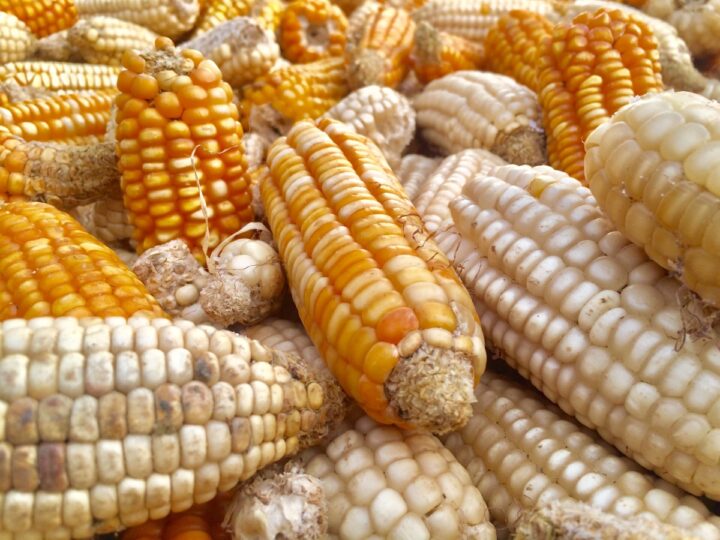
Beyond human consumption, corn played a crucial role in providing sustenance for animals on homesteads, solidifying its status as an indispensable grain. The versatility of corn extends to various culinary applications, from crafting cornmeal for cornbread to savoring corn on the cob and incorporating corn kernels into a myriad of recipes.
Among the Southern culinary treasures that showcase corn's adaptability, grits shine as an enduring classic.
Corn and grist mills were an important part of Southern life
Southern culture considered corn to be an essential grain since it was used not only to feed their families but also to feed their livestock. Moreover, depending on the purpose of the corn, it was milled differently. As a result, farmers used whole corn and cracked corn to feed their livestock.

Corn was fed into the mill through a shute and made its way between two stones of a grist mill. These two stones have groves cut in them in a special pattern called furrows.
One stone is stationary and the other turns. There is a system of pulleys and gears that turn the stone that is usually powered by an animal, tractor, or even water-powered if the grist mill is located near a water source.

The distance between the stones determines how fine the grain is milled. Cracked corn took the least amount of time to mill.
If you wanted grits, the gap was closed between the stones to make finer cracked corn. If you wanted corn meal, the gap was even closer so that it could be milled into a finer powder-like texture.
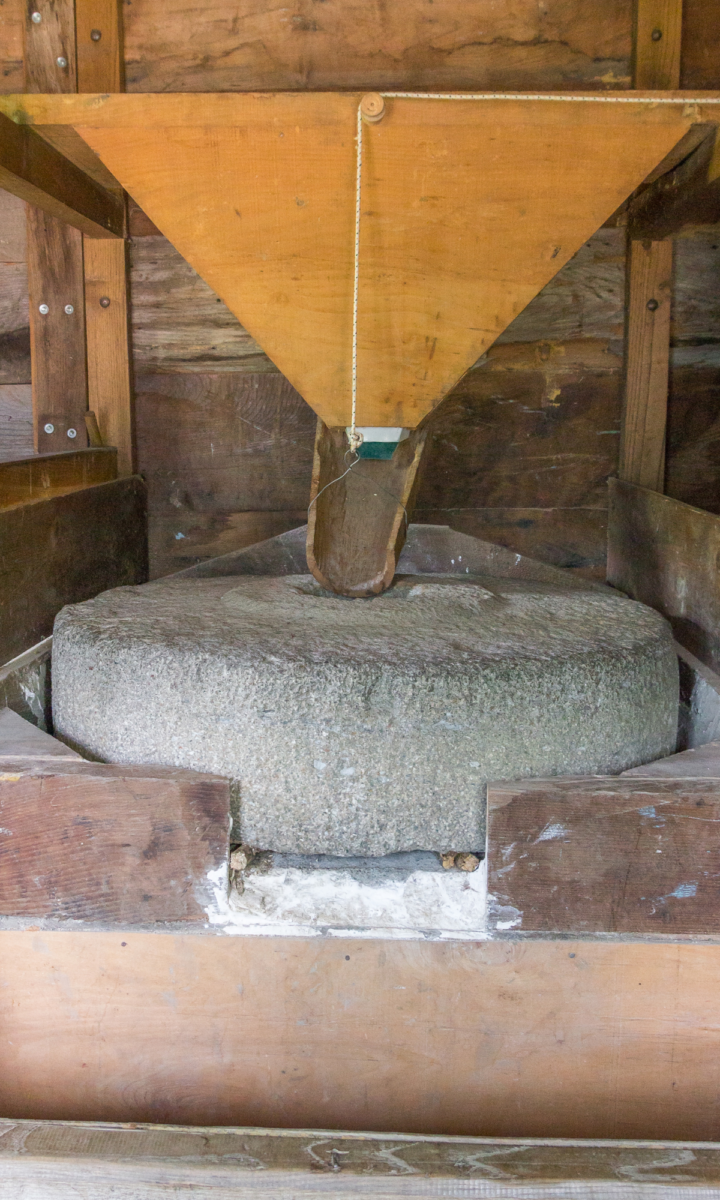
Creeks, Streams, and rivers were dotted with grist mills. The flowing water was used to power these mills to grind corn for communities.

Southerners grew their own corn and would take the corn to the community grist mill where they would have it ground into cracked corn, grits, and stone-ground cornmeal.
Visiting the gristmill served a dual purpose: providing sustenance for both your family and livestock while fostering a sense of community. People would congregate at the grits mill, engaging in conversations while their corn was being ground.
Grits
Before we delve into the art of cooking the perfect pot of grits, it's essential to familiarize ourselves with some key details about this beloved Southern dish. Grits exhibit variations based on the type of corn utilized, their color, the ground type, and their cooking speed.
Let's explore these facets of grits to gain a better understanding of this iconic dish.

Type of corn used
Grits are typically made from Dent Corn, which is a type of field corn known for its starchy, indented, or "dented" kernels.
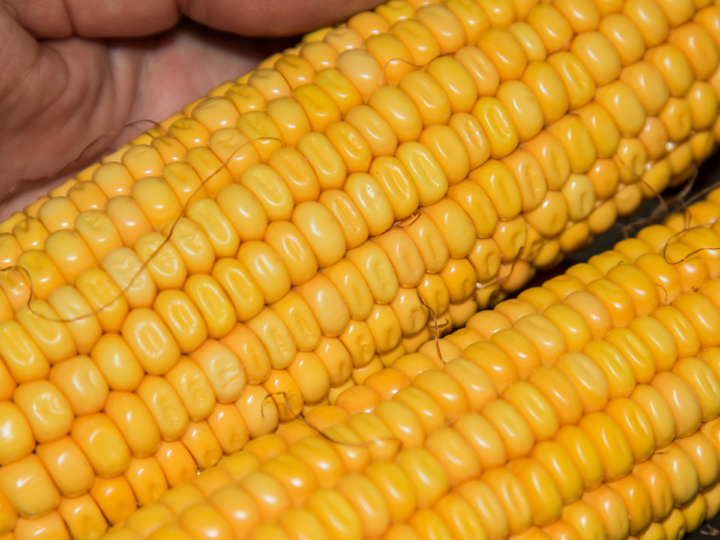
Grits are often made from Dent Corn for several reasons:
- Starch Content: Dent Corn has a higher starch content compared to other types of corn, making it ideal for grits. The starch is what gives grits their creamy and smooth texture when cooked.
- Texture: Dent Corn kernels have a distinctive indented or "dented" appearance, which contributes to the desired texture of grits. This texture allows grits to absorb liquids and thicken effectively during cooking.
- Flavor: Dent Corn has a mild and slightly sweet flavor, which is well-suited for grits. Its flavor profile pairs nicely with various seasonings and toppings, allowing for versatility in grits recipes.
- Tradition: Dent Corn has a long history of being used for grits in Southern cuisine, and tradition often plays a significant role in culinary choices.
While Dent Corn is a popular choice for making grits, it's worth noting that grits can also be made from other types of corn, such as Flint Corn and hominy corn, each of which imparts its unique flavor and texture to the final dish. The choice of corn type can vary depending on regional preferences and the desired characteristics of the grits being produced. Further discussion on hominy corn will follow below.
Color of corn
Corn comes in various hues, with both white corn and yellow corn variations available. It's all a matter of personal preference, but I primarily enjoyed white corn grits during my upbringing. When it comes to flavor, yellow grits are essentially indistinguishable from white grits.
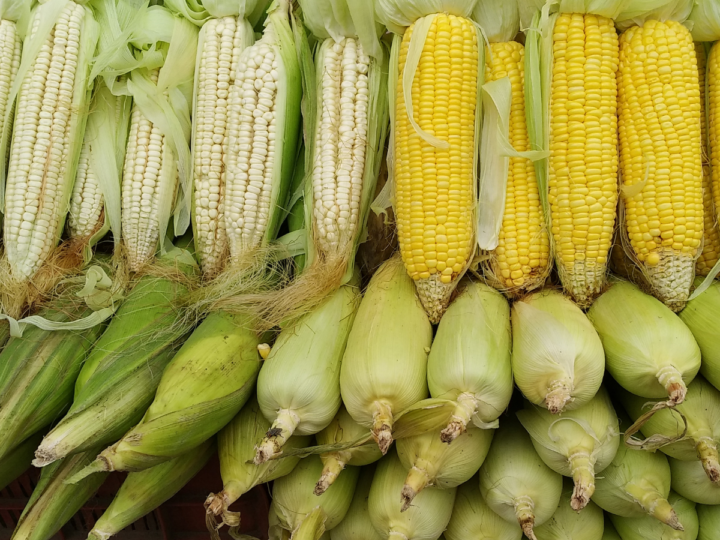
Varieties of Grits
Moving forward, there are four main kind of grits readily available in your local grocery store. First up, we have stone-ground grits, reminiscent of the grits our ancestors enjoyed when they brought their corn to the communal grist mill for milling.
Stone Ground Grits
Stone-ground grits are characterized by their coarser texture, which requires a longer cooking time. Their distinct appeal lies in their rich corn flavor, as these grits retain all components of the whole corn kernel, including the germ.
Consequently, it's perfectly normal for stone ground grits to have a speckled appearance or to spot grey specks in your stone ground grits, this is a testament to their wholesome nature.
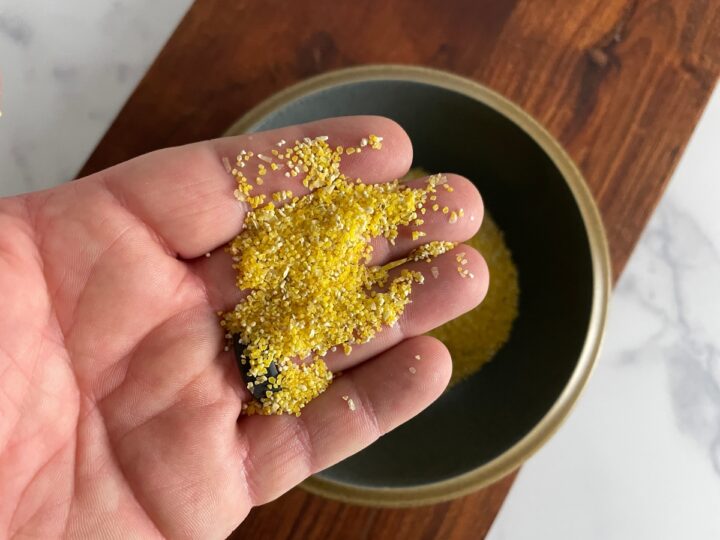
Stone-ground grits are often considered a nutritious option due to their whole-grain nature. They are the least processed among grit varieties, which not only preserves their nutritional value but also enhances their health benefits.
Sometimes stone ground grits can be found at local grocery stores, but if you cannot find a brand, I recommend ordering grits from Palmetto Farms, Marsh Hen Mill, The Old Mill, or Cotton Hills Farm. For this recipe, you will need 1 cup of grits.
Since stone ground grits are the least processed varieties of grits, they take the longest to cook. Typically, stone-ground grits require approximately 30 to 40 minutes of cooking time.
One of my favorite ways to cook stone ground grits to to make these Cheesy Grits. This recipe results in grits that have an incredibly rich corn flavor, and creamy texture, and bursting with cheesy goodness. After all, who doesn't love cheesy and creamy grits?
Stone ground grits can come in different grind textures:
- Coarse Grind: Coarse stone-ground grits have a more substantial texture and a longer cooking time. They retain more of the corn's natural texture and flavor, making them a favorite among grits purists.
- Medium Grind: Medium stone-ground grits are a middle ground between coarse and fine grinds. They offer a balance of texture and creaminess and tend to be a popular choice for those who enjoy the traditional stone-ground taste but with a slightly smoother texture.
- Fine Grind: Fine stone-ground grits are ground to a finer consistency, resulting in a smoother and creamier texture. They cook relatively quickly compared to coarser grinds and are often chosen for their smoother mouthfeel.
The choice of grind depends on personal preference and the dish you plan to prepare. Coarser grinds are excellent for dishes where you want a more rustic texture, while finer grinds work well in recipes where a smoother consistency is desired.
Experimenting with different grind sizes can help you discover the perfect stone-ground grits for your culinary creations.
Quick-cooking grits
The next type of grits you will find in the grocery store is called quick grits. Quick grits are what most people cook these days.
Quick cooking grits, as the name suggests, are a type of grits that have been processed to cook faster than traditional stone-ground or regular grits. These grits are typically made by pre-cooking the corn and then drying it before grinding it into grits. This pre-cooking and drying process reduces the cooking time significantly, making quick cooking grits a convenient option for those who want a quicker meal preparation.
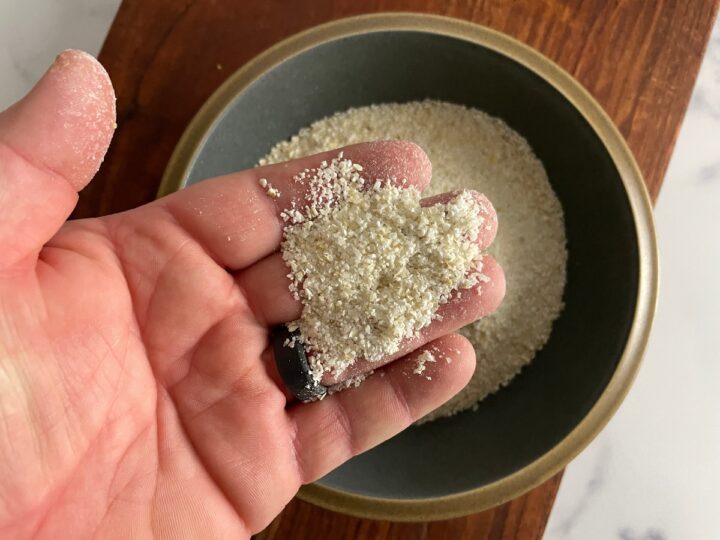
While they are convenient, it's essential to note that quick-cooking grits may not have the same depth of flavor or texture as stone-ground grits. The more extended cooking process of stone-ground grits allows for a fuller corn flavor and a creamier, thicker texture while quick-cooking grits tend to be smoother and may have a milder taste.
Quick-cooking grits are a popular choice for busy individuals who want to enjoy grits without spending as much time in the kitchen. They can be a versatile addition to various dishes, from breakfast to dinner, and are especially handy when you're short on time.
Hominy grits
Hominy grits are a type of grits made from hominy, which is a dried maize (corn) kernel that has had its tough outer hulls removed through a process called nixtamalization. The whole corn kernels are soaked in an alkaline solution (lye solution), usually limewater, which softens the hulls and makes them easier to remove.
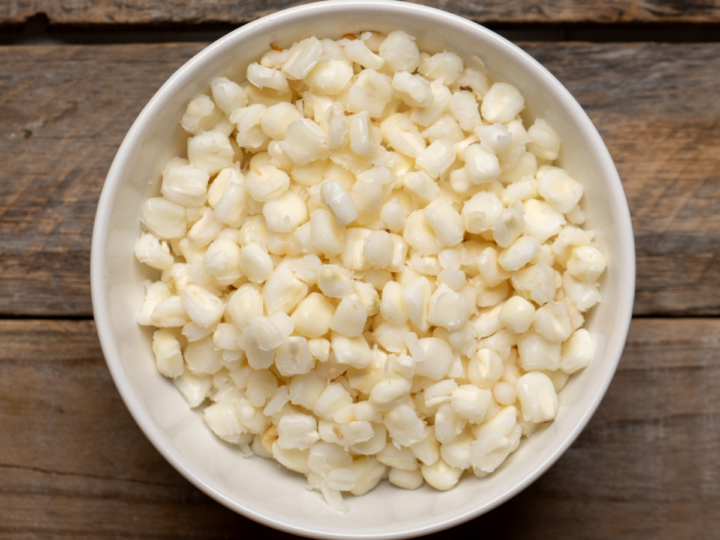
Afterward, the kernels are washed to remove the alkali solution, dried, and ground into the coarse, grainy texture that characterizes grits.
What does Hominy taste like
Hominy grits have a distinct flavor and texture compared to regular corn grits. They are known for their slightly nutty and earthy taste, as well as their chewy consistency. These grits are a popular staple in Southern and Mexican cuisines and are used in a variety of dishes, including breakfast items, side dishes, and even casseroles. They are versatile ingredients with a unique flavor profile that sets them apart from traditional corn grits.
Instant Grits
Instant grits are a type of grits that have undergone further processing to reduce their cooking time significantly. Unlike traditional stone-ground or regular grits, which can take anywhere from 20 to 60 minutes to cook, instant grits can be prepared in a matter of minutes, typically within 1 to 2 minutes. These are the type of grits that come in little packets similar to instant oatmeal.
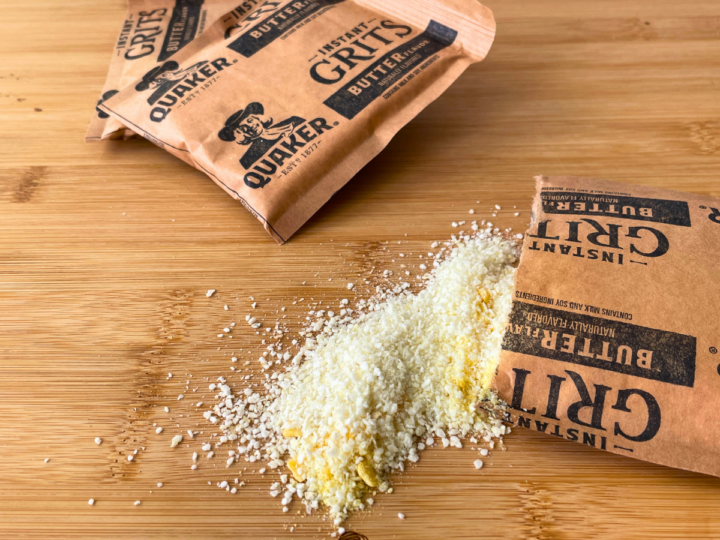
The process of making instant grits involves partially cooking the grits before drying them. This precooking step, along with the fine grinding of the corn, allows them to rehydrate quickly when mixed with boiling water or another liquid. As a result, they are a convenient option for those looking to prepare a quick meal or side dish.
However, it's worth noting that instant grits may have a different texture and flavor compared to stone-ground or regular grits. Some enthusiasts find that instant grits have a slightly less robust taste and can be less creamy. Nonetheless, they remain a popular choice for those seeking a fast and easy way to enjoy this classic Southern dish but they are my least preferred way to eat grits.
How are grits served?
Grits can be served in various ways, making them a versatile dish that can be enjoyed for breakfast, lunch, or dinner.
Here are some common serving methods for grits:
- Breakfast Grits: Grits are often served as a breakfast dish. They can be cooked with water, milk, or even chicken broth for a creamy consistency and served with a variety of toppings, including butter, cheese, bacon, sausage, fried eggs, or shrimp. A popular breakfast variation is "shrimp and grits," Which is a South Carolina Traditional Dish where sautéed shrimp are served over a bed of creamy grits.
- Savory Side Dish: Grits can be served as a side dish alongside other Southern favorites like fried chicken, collard greens, or barbecue. They can be prepared with savory toppings like gravy or cheese for a hearty accompaniment.
- Cheesy Grits: Grits are often cooked with cheese to create a creamy and cheesy dish. Cheese grits use a variety of cheeses such as Cheddar, American, or Parmesan cheese. Each is commonly used to add flavor and richness.
- Grits Casseroles: Grits can be incorporated into casseroles, often layered with vegetables, meats, and cheese to create a satisfying one-dish meal.
- Grits Cakes: Cooked grits can be chilled, cut into shapes, and pan-fried to make grits cakes. These can be served as a side or even as a base for toppings such as grilled shrimp or vegetables.
- Sweet Grits: While grits are typically savory, they can also be prepared with sweet additions like sugar, cinnamon, and vanilla for a dessert-like treat. Serve them with fruit, honey, or maple syrup for a delightful twist.
- Grits Bowls: Create customized grits bowls by offering a variety of toppings and mix-ins, such as avocado, salsa, grilled vegetables, or crumbled bacon, allowing each person to customize their meal.

Ultimately, how grits are served depends on personal taste and regional traditions. They are a blank canvas for culinary creativity, making them a beloved staple in Southern and comfort food cuisine.
Conclusion
In conclusion, grits stand as an enduring staple that has won the hearts and palates of generations. From their humble origins as nutritious sustenance for Native Americans to their prominence on Southern breakfast tables, grits have showcased their versatility and adaptability over the years.
Whether opting for the coarser grind of stone-ground grits or embracing the convenience of quick-cooking grits, the essence of good grits remains unchanged—the celebration of corn in all its glory, from the entire kernel to the creamy, low-heat embrace of a slow cooker. In the end, the Southern tradition of savoring grits, rich in flavor and history, continues to warm hearts and bring families together, embodying the essence of a true Southern staple.
Thanks for stopping by Southern Food Junkie. It is our hope that you enjoy this recipe sharing it with friends, family, and coworkers. Make sure to take time to give thanks to the creator, God, by which all blessings flow.
-Ronnie | Let's Get Food Junked
John 6:35

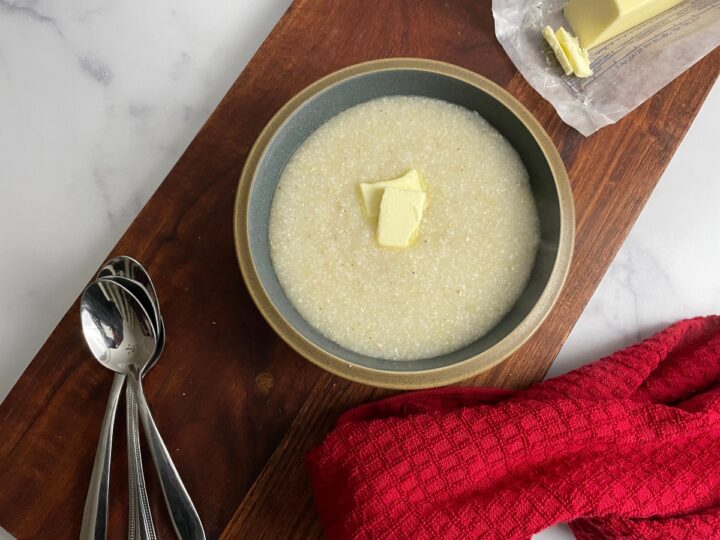
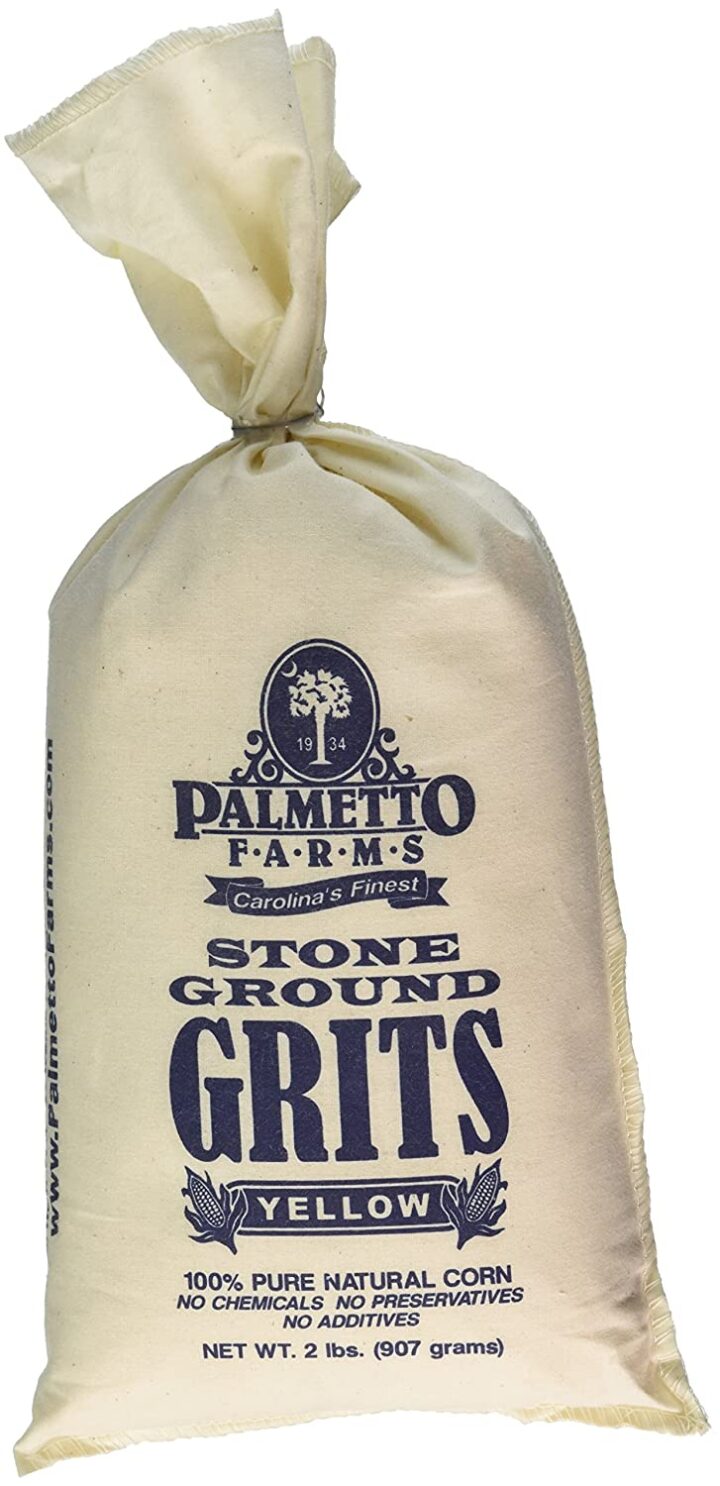



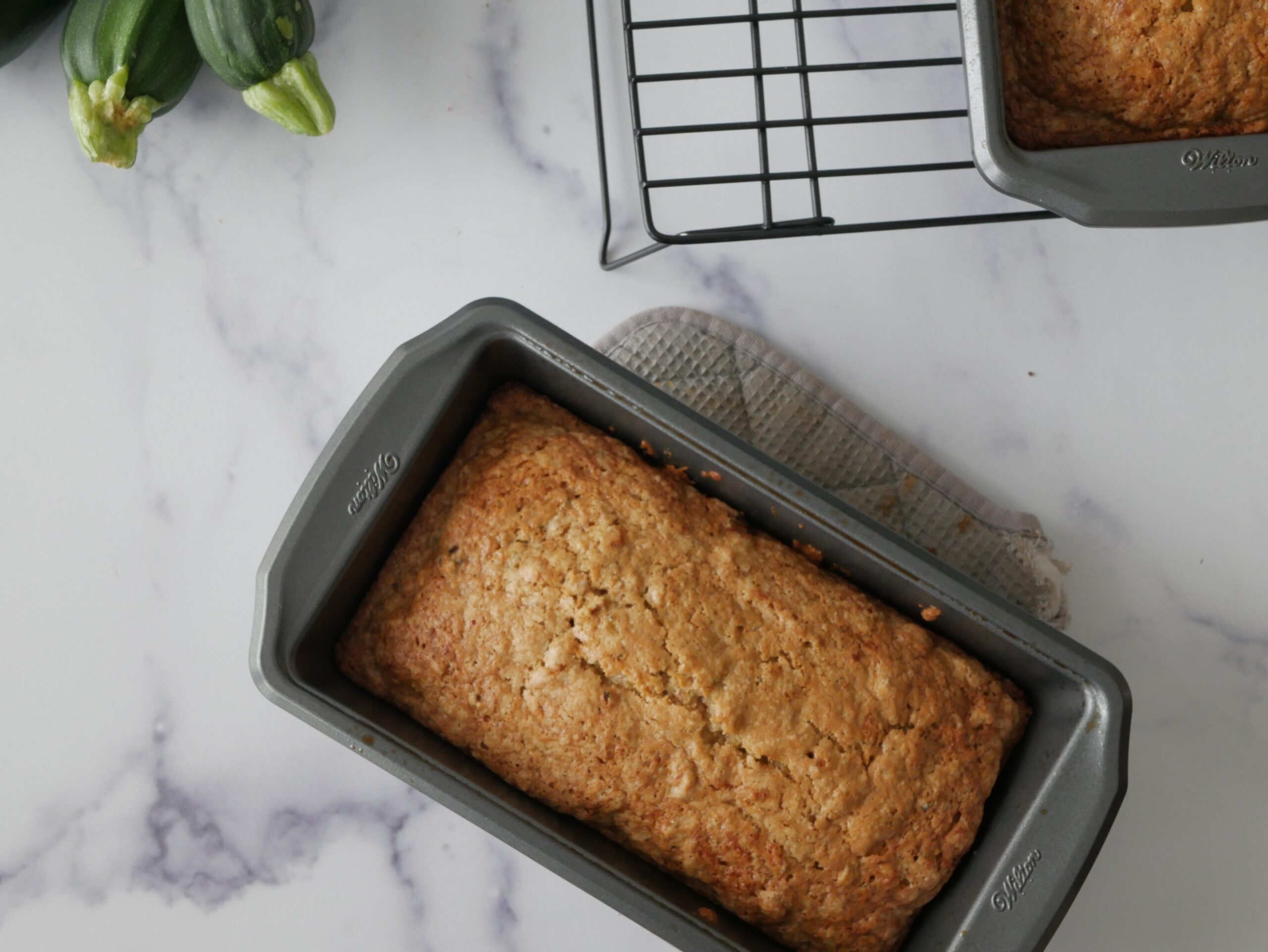

Leave a Reply